錄像廳,第一至三季
2018.04.14-22, 08.25-09.22, 11.15-25,台北當代藝術中心,台北
第一季:在瘋狂追劇之前,藝術家:Claudia Bitran、李然、倪祥、謝燚
電視機現今彷彿是一種懷舊的存在,我們早已轉移至 YouTube, Facebook 等社群媒體平台或是 Netflix 網飛, MOD等網路影音串流,隨選隨看各式各樣的綜藝節目、連續劇以及電影。使用的工具多是電腦、手機或是平板,電視逐漸淡出觀眾的視線,甚至已成為螢幕的延伸。但是電視曾經是傳遞與散播動態影像最主要的工具,建構出我們的日常觀看經驗。透過電視機與電視網絡,意識形態得以隱身於影像當中,在不同的文化語境中被製造、傳遞、播放與消費。另一方面,電視將影像以時間為單位切割,節目接續節目形成的電視流,隱隱地替現今瘋狂追劇的反抗觀看模式鋪平道路。本期錄像廳《在瘋狂追劇之前》聚焦藝術家作為觀看的實踐者與影像的生產者的雙重身分,以援引、混雜與拼貼電視節目的視覺語言與形式的作品,思考觀看的道路是得以通往清晰定義出他者,凝聚出「想像的共同體」的樂園?抑或終究邁向「無意識觀看」的永無止境?
第二季:刪除物件歷史,藝術家:Lorna Mills、Antonio Serna、谷口曉彥、陸明龍
延續錄像廳第一季《在瘋狂追劇之前》對觀看實踐的探討,第二季《刪除物件歷史》將著重在個人電腦、網路與影像應用軟體陸續普及對圖像生產與流通產生的衝擊與轉變。影像與音軌處理軟體讓大眾媒體中的影像得以被解放,更多的觀眾不再是被動的觀看者,同時也成為生產者。他們可以自由對影像產生誤讀,透過網路傳遞,隱身在影像當中的意識形態得以輕易跨越地理、文化與族群間的邊界,甚至附身在伴隨著出現的數位擬仿圖像。數位圖像讓我們可能在親眼見到物件主體之前,就已經見過該物件的影像。在這些過度真實的數位圖像前,是否還能眼見為憑?如果開始進行考古,物件的數位影像該不該被記入該物件的歷史?而當我們點下刪除,不復存在的是物件,圖像,還是一段編碼?我們對時間感知已逐漸與機器時間與網路時間同步,數碼物(Digital Objects)完美地鑲嵌在自然與技術的複合結構中,人類自身是不是也是棲居在這第二自然中的數碼物?
第三季:眼看蟲魚鳥,藝術家:吳其育、張博傑、Rob Carter、Eva Papamargariti、Tejal Shah、Chulayarnnon Siriphol
在錄像廳第二季《刪除物件歷史》的最後,我們詰問人類自身是否也成為棲居在自然與技術的複合結構中的數碼物。自然與技術並非相互對立,二者之間的動態交纏深深影響當代的視覺經驗。技術的演進製造更多類型的觀看儀器,讓觀看的方式與角度得以被拓展。而自然也在各種影像呈現中被主體化。影像化的自然,是否也輕易地塑造人類做為一個物種的命運共同體想像,成為一種不得不臣服的意識形態?第三季《眼看蟲魚鳥》的作品,觀看與被觀看都不再以人作為觀看的主體與視線的中心。想像在閉錄電視、無人機、科學儀器記錄下的影像中,是什麼樣的平行的敘事得以被述說。在這個時間軸中,地理景觀是否有可能不再成為資源的象徵,被資本主義收編?人與非人是否有可能視線齊平,攜手並進?如果觀看是作為擁有同理心的第一步,或許人類該先試著像鳥一樣觀看,才有可能走向像蜥蜴ㄧ樣感受的未來。
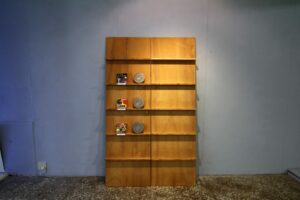
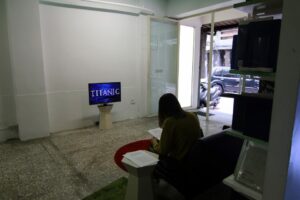
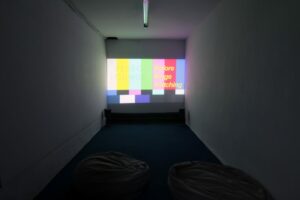
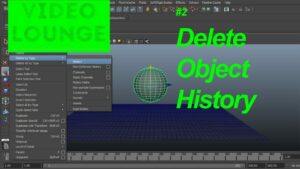
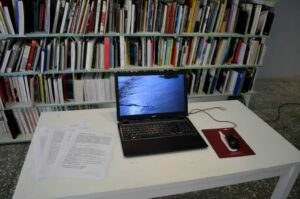

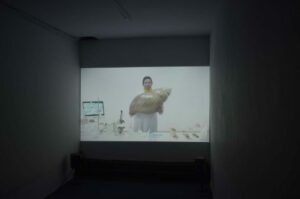
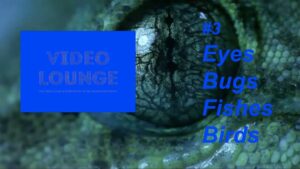
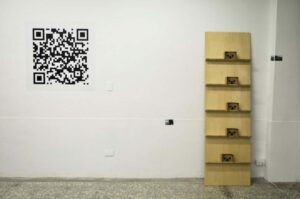
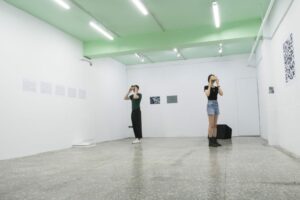
Video Lounge, Season 1 – 3
2018.04.14-22, 08.25-09.22, 11.15-25, Taipei Contemporary Art Center, Taipei
Season 1: Before Binge Watch, Artists: Claudia Bitran, Li Ran, Ni Xiang, Xie Yi
Television recalls a sense of nostalgia. We as viewers turn to contents on online media platforms, such as YouTube, Facebook or Netflix. Endless shows, series and movies await and on demand. TV as a telecommunication medium is gradually replaced by personal computers, smartphones or tablets, becoming an extension of the screen. It is, however, once the dominant tool to disseminate moving images and to construct daily visual experience. Through television screens and TV broadcast networks, ideology embedded in images and moving are made, transmitted, displayed and assimilated into a state of consciousness. In addition, TV programs are divided by time slot, forming a TV flow that allows viewers watching program after program, preparing the foundation for the upcoming age of binge watching. The 2018 Video Lounge Series 1: Before Binge Watching focuses on works that appropriate, mix and bricolage forms and visual elements commonly seen on TV. In these works, artists take a double role of being a spectator and a image maker. Would they eventually lead the ways of seeing to building a “imagined community” with visible Others, or force us to linger in a limbo with infinitely gawking?
Season 2: Delete Object History, Artists: Lawrence Lek, Lorna Mills, Akihiko Taniguchi, Antonio Serna
Following the discussion about the practice of looking in series 1 Before Binge Watching, Video Lounge Series 2 Delete Object History will address the shift in image production and circulation with the emergence of the Internet, personal computer and imaging software. With the intervention of graphic and audio editing softwares, images in mass media are liberated by these no longer passive spectators. These images are then freely interpreted, sometimes with misapprehension, and transformed with spectators’ ideologies. They can easily penetrate the geographical, cultural and ethical reality, reincarnating in the digital simulated form. The Real is thus drastically changed. We could see the imagery of the object before we see the object itself. Now how do we define the reality with these hyperreal visuals? Can we still say that seeing is believing? If we trace the history like archaeologists do, do we count the history of the digital image as part of the object’s history? When we click the delete button, do we really erase the object, its image, or merely a few lines of code? Our sense of time is gradually synchronized with the machine time and the Internet time, when digital objects already impeccably dwell in the complex of nature and technics. Can we still tell the differences between human beings and digital objects?
Season 3: Eyes, Bugs, Fishes, Birds, Artists: Rob Carter, Po-chieh Chang, Eva Papamargariti, Tejal Shah, Chulayarnnon Siriphol, Chi-yu Wu
In Video Lounge Series 2 Delete Object History, we questioned ourselves the way to distinguish the difference between human beings and digital objects in the hybrid environments of nature and technology. Nature and technics are not rigid dichotomy. The intertwined dynamics of the two concepts deeply shaped the visual experiences of our times. The revolution of technology led to the invention of various apparatus for seeing and looking as well as of viewing perspectives. Natural landscapes becomes a subject to be seen. The representation of nature in different visual media creates an imagined community of human beings as one specie. Is this an ideology to which we surrender? Works in Series 3 Eyes, Bugs, Fishes and Birds shift the center of the vision from the human beings’ perspective to the Others. What kind of narratives could be found in the images captured by CCTV, drones and scientific equipments? On this parallel timeline, does the natural landscape escape from the fate of being excavated by the capitalism? Could human and non-human perceive from the same standing point and co-exist peacefully? If being able to see is the first step to have empathy, are we prepared for the future when we see from the eyes of bugs, fishes and birds?